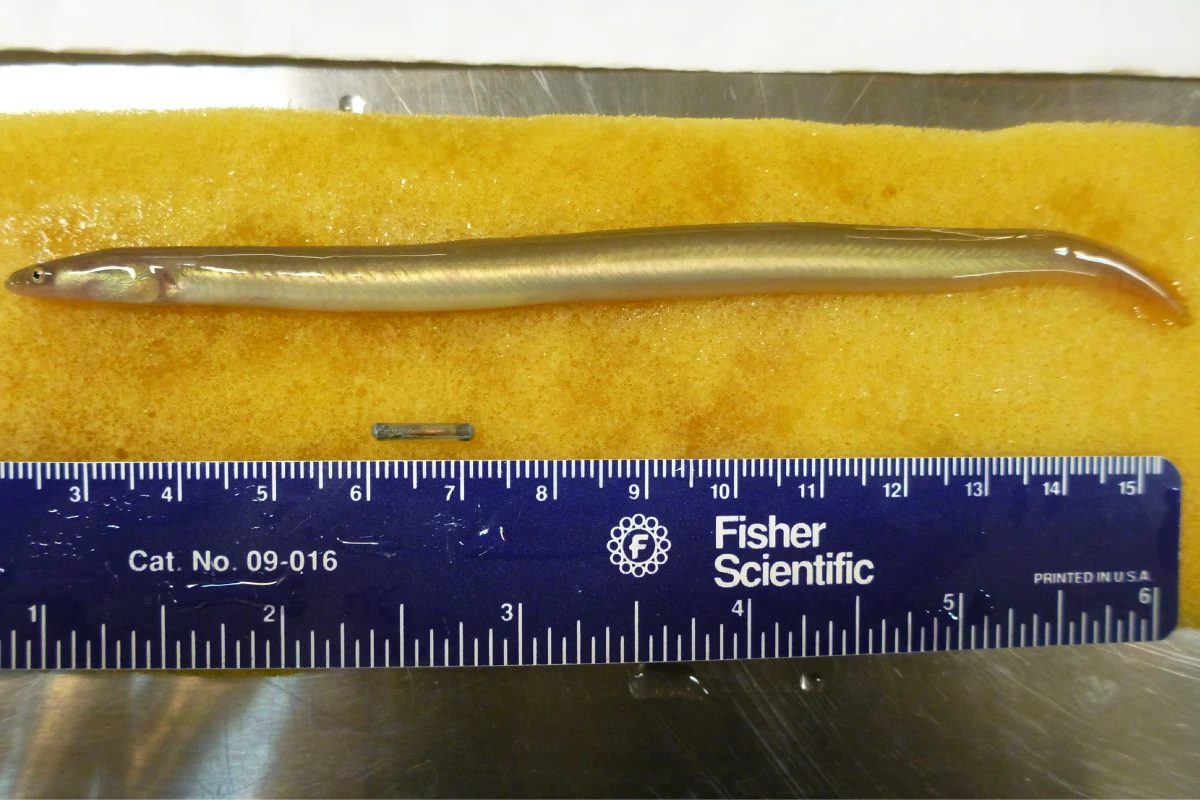If you're going to check how fish are affected by hydroelectric dams, it's particularly important to monitor tiny, delicate individuals. That's why US scientists have developed what is claimed to be the world's smallest fish-tracking tag.
The inexpensive device was created by a team at Washington state's Pacific Northwest National Laboratory (PNNL), specifically for the tracking of threatened juvenile American eels, Pacific lampreys and Chinook salmon. It's appropriately named the Eel/Lamprey Acoustic Tag, or ELAT.
Measuring just 12 mm long by 2 mm wide, the cylindrical tool is even smaller than the 15 x 3.38-mm tag previously developed at PNNL. It weighs 0.08 g in the air, and just half as much in the water. And like the previous device, it gets injected into captured-and-released fish, proceeding to emit an acoustic pulse once every five seconds as the animals swim through local waterways.
In the case of the ELAT tag, those pulses travel "the length of a football field" through the water, where they're picked up by data-logging underwater receivers already in place near potentially obstructive structures such as dams. Its unique lithium-carbon-fluoride battery, which was developed at PNNL, reportedly holds twice the energy of a typical AAA battery – this allows the tag to transmit its pulses for 30 days.

In lab tests, it was found that the tag didn't affect the swimming ability of juvenile fish. As a result, whereas it was previously inadvisable to tag salmon fingerlings measuring any shorter than 3.7 inches (94 mm), that figure can now be dropped to 2.3 inches (58 mm) with the ELAT tag. What's more, in field trials, almost 100 percent of tagged fish were subsequently detected in different types of river environments, including the outflows of dams.
"This tag opens up possibilities to track movement of a variety of species and life stages that we were previously unable to study," says PNNL mechanical engineer Daniel Deng, who led the project.
The research is described in a paper that was recently published in the journal Cell Reports Physical Science.
Source: PNNL





